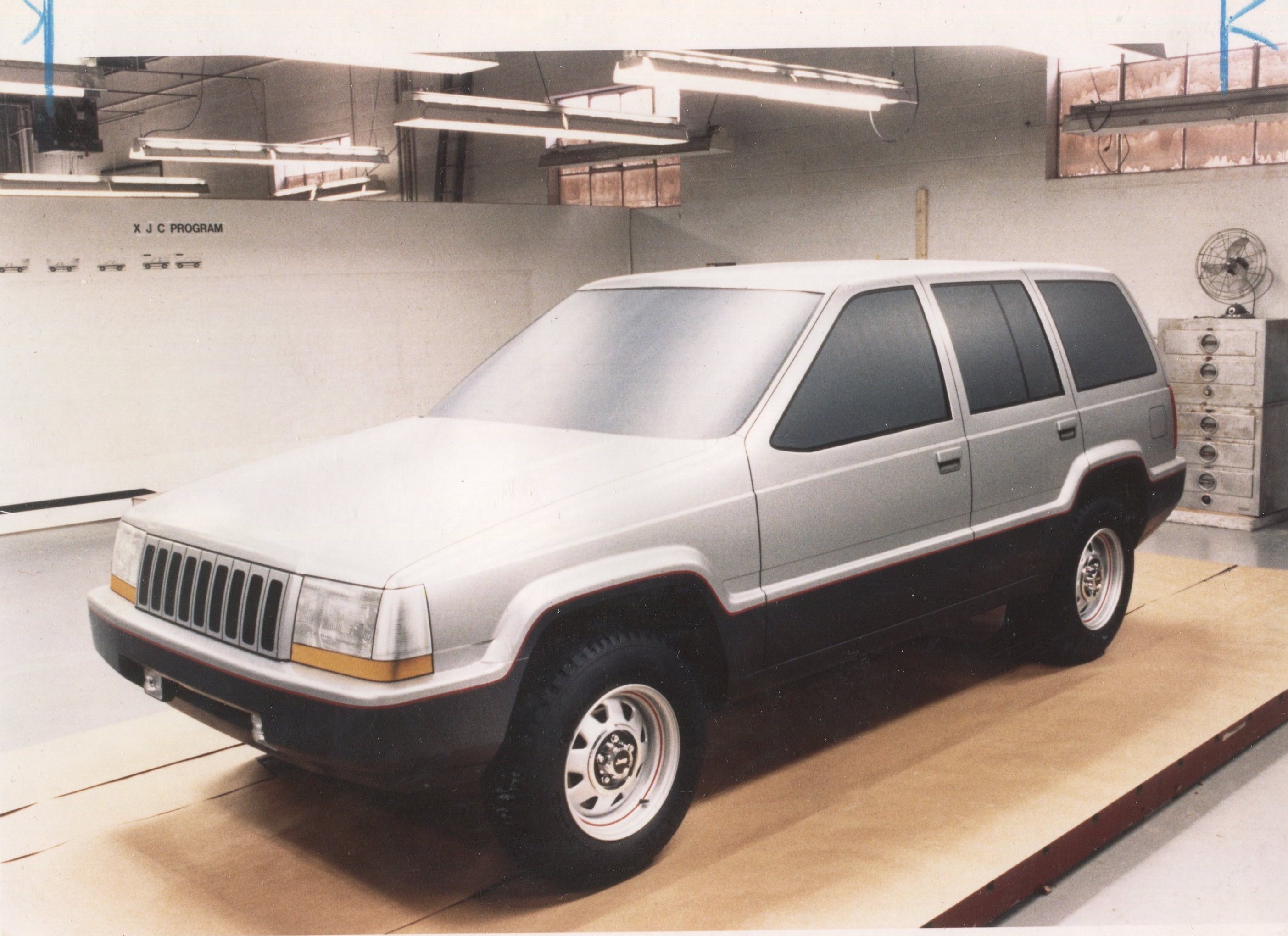Feb. 19 marked the 80th anniversary of Franklin Roosevelt’s signing of Executive Order 9066, which led to the forced confinement of an estimated 120,000 Americans of Japanese descent in camps in 10 states mostly in the western part of the U.S. They were deemed national security threats.
President Ford eventually repealed the order in 1976, but the damage had been done.
I mention this because this year also marks the 30th anniversary of one of the most iconic SUVs ever, the Jeep Grand Cherokee, which looks remarkably like the design penned by another icon, Lawrence Kiyoshi Shinoda, who was never given full credit for his effort. Larry, as friends called him, was one of America’s greatest car designers.
But let the pictures tell the story.
I met Shinoda several times in Tokyo in the early 1990s. He even wanted me to help him write his autobiography. The working title: “Perfect Timing.”
Three things struck me from our meetings.
First, Shinoda was pretty blunt. He was not one to mince words, and that’s generally not a great trait if you want to rise up the corporate ladder, which Shinoda did during his distinguished career at each of America’s automakers.
Second, he had some real grievances with the motoring establishment in Detroit, mostly about how he was treated as an American of Japanese descent. There’s no need to discuss them in detail, but they had the ring of truth for someone like me who grew up in the ʼ50s and ʼ60s when memories of the Second World War, including Japan’s attack on Pearl Harbor and the bloody battles at Iwo Jima and Okinawa, were still fresh in some people’s memories.
What caught my attention most is that he had spent two years, from shortly after his 12th birthday in May 1942 to spring 1944, at the Manzanar War Relocation Center.
Let’s not mince words: Manzanar was a prison camp designed to confine mostly American citizens, including children, behind barbed-wire fences with bayonetted guards.
There were a total of 10 camps. Although not the largest, Manzanar, which was located in California, is arguably the best known.
Shinoda, his sister and mother (his father had passed away when he was three) were given one week to prepare for their move and told to take only what they needed. Shinoda crammed everything he felt he might need into a duffel bag including, not surprisingly, notebooks and pencils to draw. They slept on army beds in a little wooden shanty.
They were released in 1944 and spent the duration of the war in Grand Junction, CO, before returning to Los Angeles, where they had lived before being imprisoned. Shinoda completed his high school education, then went on to the Art Center College of Design, which at the time was located in Los Angeles. He never earned a degree.
According to one of the accounts about his life, he got his start in the auto industry by building hot rods and drag-racing through the streets of L.A. He then joined Ford, briefly worked at Packard, and then General Motors – all in the mid-1950s. Later he went back to Ford and then eventually established his own design company, Shinoda Design Associates.
Shinoda’s clay model bore strong resemblance to actual ʼ93 Grand Cherokee.
It was against this backdrop that, when Shinoda showed me a scrapbook of artist renderings and photos of a clay model of a 4-door SUV that looks remarkably like the first-generation Grand Cherokee, I took interest in his story.
That was 30 years ago. Shinoda died while awaiting a kidney transplant in 1997 at the relatively young age of 67.
But to complete the timeline, Shinoda participated in a design competition for the Jeep Grand Cherokee in the summer of 1985 that also included such well-known designers as Alain Client and Giorgetto Giugiaro. By November 1985, American Motors decided on none of the above. It was at this point, according to Shinoda, that the automaker’s inhouse design team began to “borrow” from his creation.
The project, codename XJC, involved three different models: a 2-door and 4-door SUV and pickup truck.
Shinoda alleged that his 4-door design “ended up as the inhouse design by American Motors.” Chrysler acquired American Motors in 1987.
Again, let your eyes be the judge.
Before Shinoda died in 1997, Chrysler made a settlement of more than $200,000. At the time, he alleged the automaker owed him more than $170,000 for his work on the vehicle concept.
The Grand Cherokee went on sale in April 1992 as a ʼ93 model. It was a huge hit at the 1992 North American International Auto Show and won Motor Trend’s 1993 Truck of the Year Award. Since then, Jeep has sold more than 7 million units.
Although Chrysler paid him before he died, Shinoda never really got the credit he deserved for the design of the Grand Cherokee or his role in ushering in the modern era of the SUV. It belongs on his resume, alongside the ’63 Corvette Stingray and ’69 Boss 302 Mustang.





